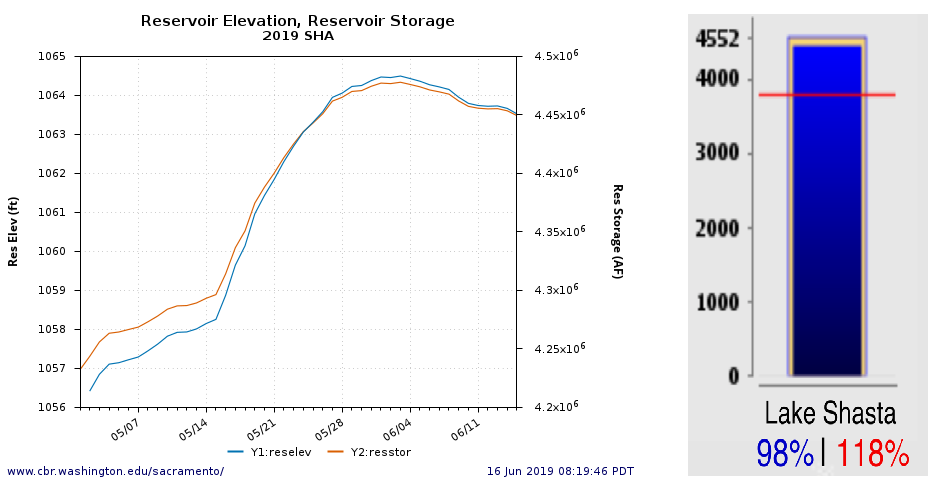Lower Sacramento River water temperatures exceed water quality standards and lethal levels for newly hatched sturgeon. In a prior post I discussed compromising water temperatures for sturgeon and salmon under low flows in dry years in the lower Sacramento River (see map, Figure 1). But I did not expect the Bureau of Reclamation to violate its permit conditions for the Central Valley Project in this record setting wet year. Flow in the lower river has dropped to 9000 cfs, and water temperature has risen above 20oC (68oF) at Wilkins Slough upstream of the mouth of the Feather River near Grimes (Figure 2; this is downstream of the area shown on the map). In the week following June 10, Reclamation dropped reservoir release nearly 3000 cfs (Figure 3), leading to the rise in water temperatures. The water temperature standard of 56oF was also exceeded in the upper river near Red Bluff (Figure 4). The upper-river standard can be relaxed in drier years, but that would not apply in this near record wet year (Figures 5-8).

Figure 1. Map of the Sacramento River Basin (Princeton Ferry to Keswick Dam)

Figure 2. Water temperature and flow rate of Sacramento River at Wilkins Slough gage near Grimes. Water quality standard for lower river is 20oC (68oF).

Figure 3. Water release from Shasta/Keswick dams in June 2019.

Figure 4. Water temperature of upper Sacramento River near Red Bluff (RDB), Bend (BND), and Balls Ferry (BSF), May-June 2019. Red line is water quality standard for upper river.

Figure 5. Lake Shasta storage in 2019 compared to historical average, wettest, and driest years.

Figure 6. Lake Shasta water level and storage May-June 2019. Lake is at 98% capacity and 118% of average storage on June 15, 2019.

Figure 7. Snowpack in Central Valley December-July. Blue lines are 2019.

Figure 8. Mount Shasta on June 15, 2019.
